How to Choose Marketing Tactics for your Service to Achieve Your Goals in Time
AIDAS BENDORAITIS / APRIL 18, 2020
AIDAS BENDORAITIS / APRIL 18, 2020
Here’s the audio version — perfect if you’re on the go:
Invest 6 minutes leveling up on this topic:
Do you have a product or a service, but you don’t know how to market it effectively? Today I want to show you how you can use the strategic prioritizer 1st things 1st to create the marketing strategy. We are going to evaluate a series of marketing tactics according to our chosen criteria to see on which of the tactics we should focus. To be practical, I will show you an example with the strategic prioritizer itself as a service that I want to promote.
The workflow of the strategic prioritizer is pretty straightforward and consists of four steps:

Note, it would be best if you could invite a marketing specialist to guide you through this.
Ready? Let’s start!
Add a new project to the organizational account. From the project templates, choose “Marketing Strategies”.
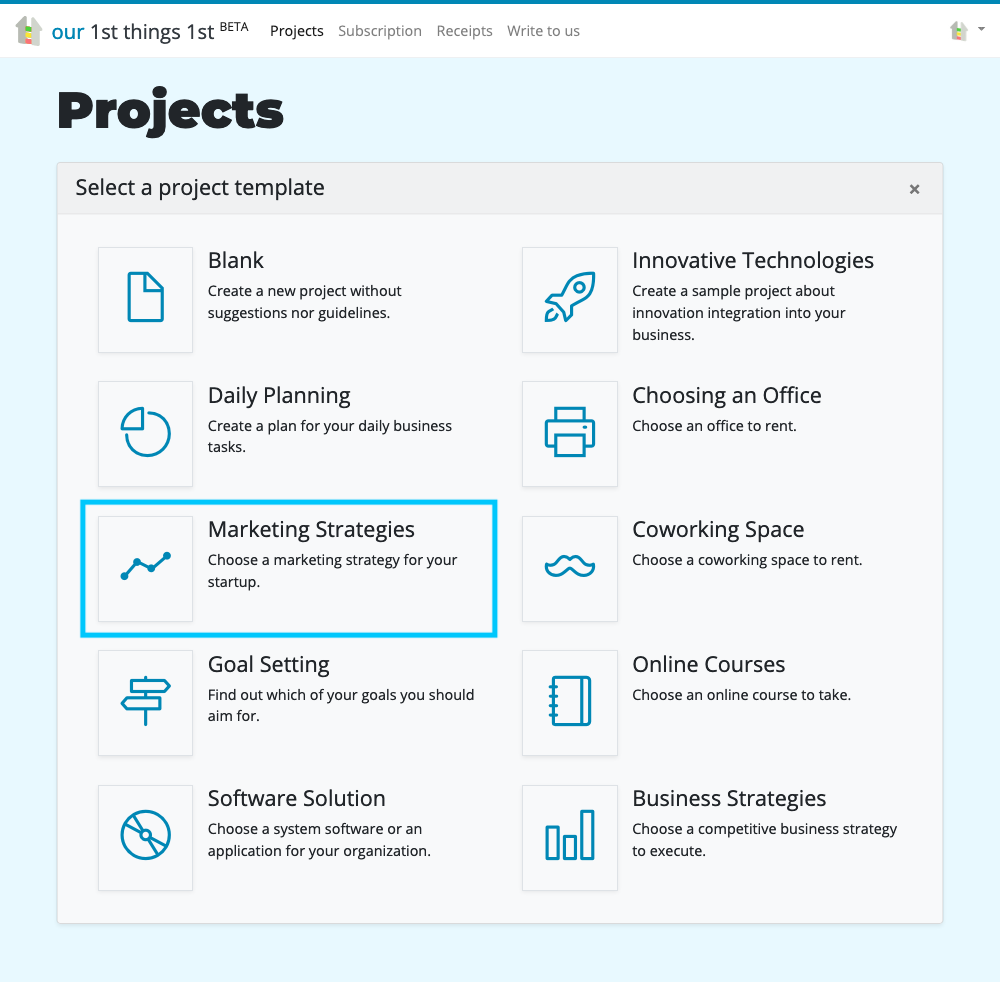
The project creation wizard will guide you through the essential questions:
1. Change or keep the project title and description. I will call my project “Marketing Initiatives for 1st things 1st”:
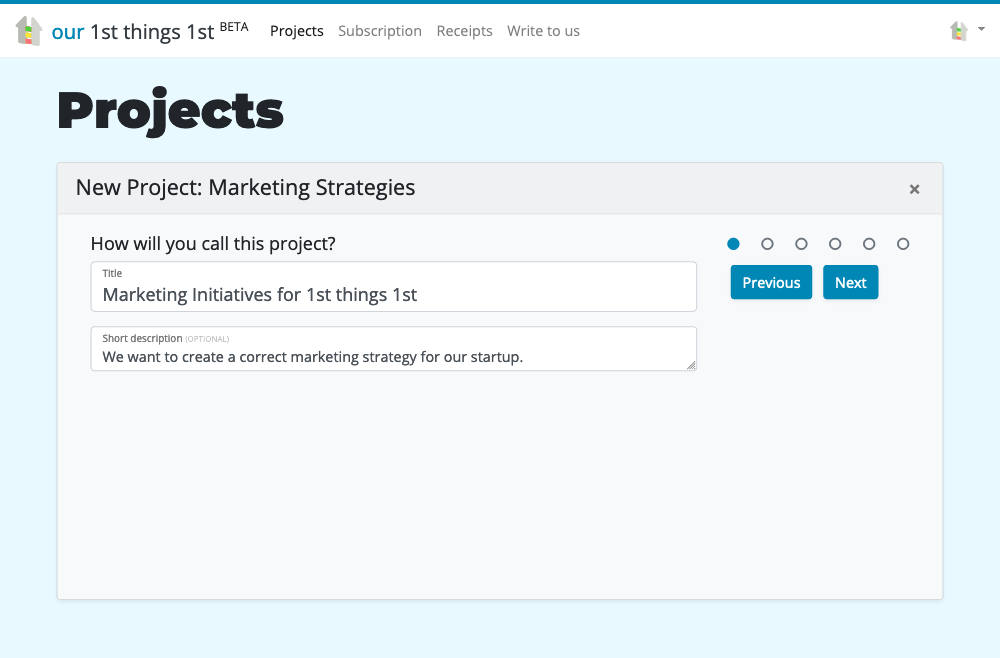
2. Decide how to name things. The preselected values suggest evaluating Tasks by Criteria. I will leave them this way. Do Initiatives or Tactics sound more reasonable to you than Tasks? Do Values or Aspects seem better than Criteria? You decide.
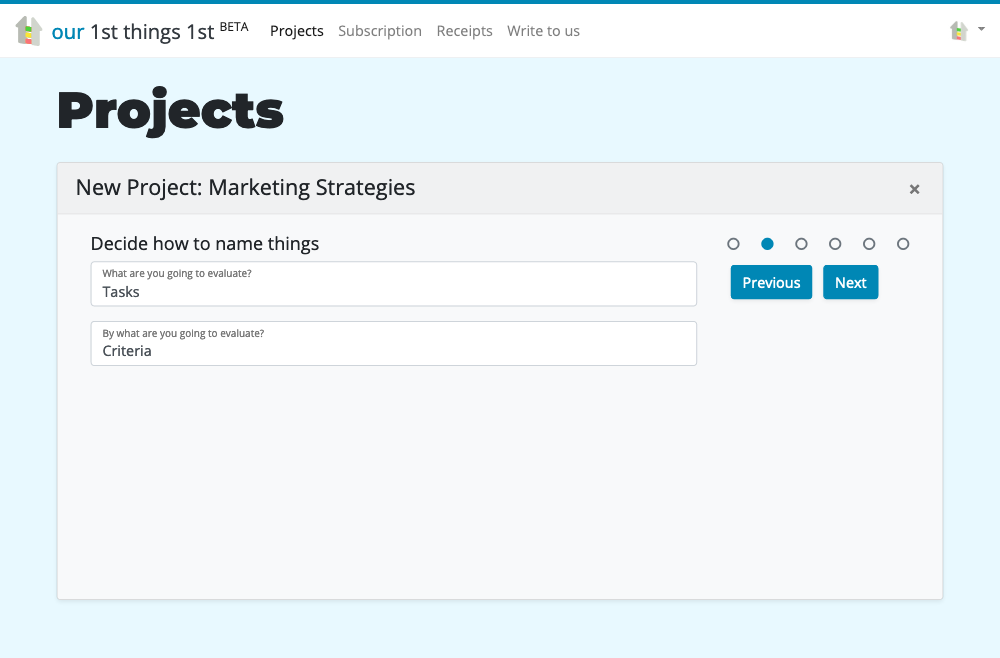
3. Define your mission and vision. This step is not mandatory, but it helps you get into the correct mindset.
The mission of 1st things 1st is “Assist people in defining and following their direction.”
And the vision is “1000 self-contented people and 100 successful teams in 3 years.”
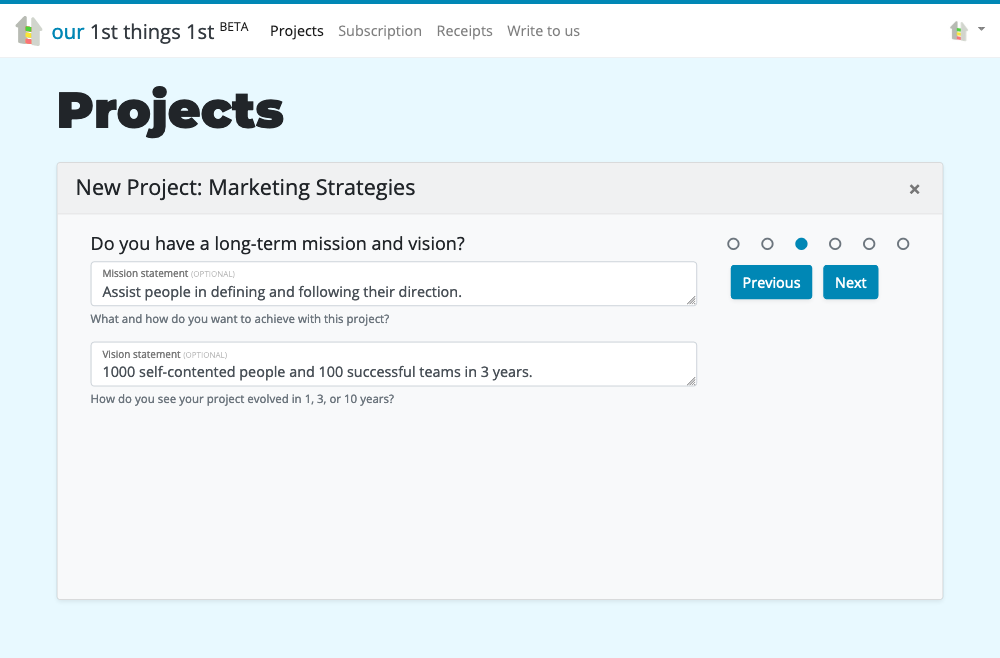
4. Define the timeframe for your project. This step is also not mandatory, but when you have the start and end in mind, you can better choose the tactics for that timeframe.
As you can guess from the vision, the timeframe for 1st things 1st will be from the January 1, 2020 till December 31, 2022. After that, the strategies might need to get revisited.
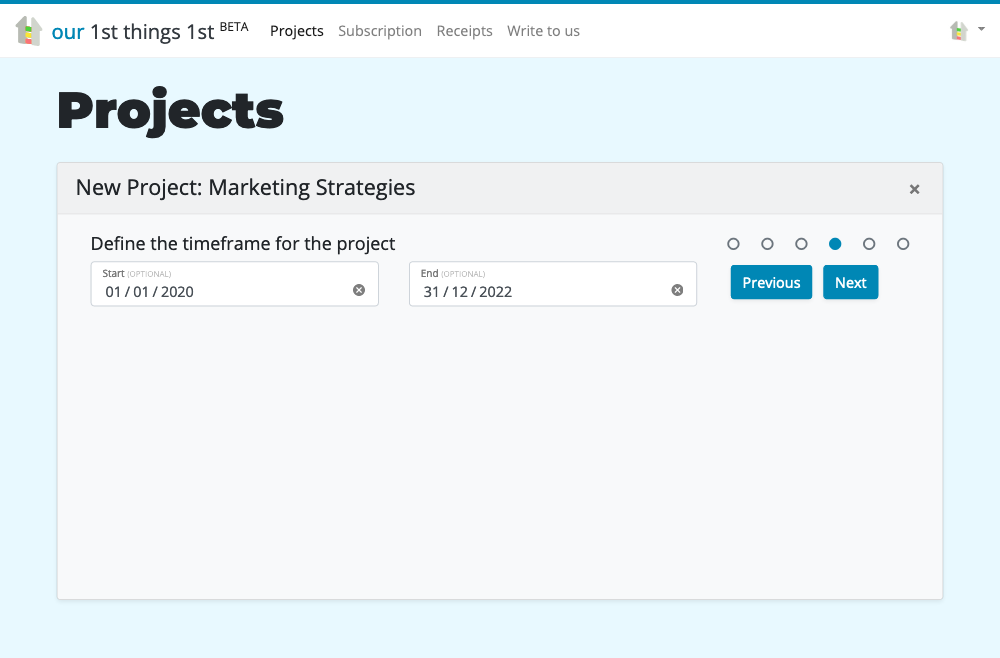
5. Choose up to 5 criteria. Check what resonates with you mostly.
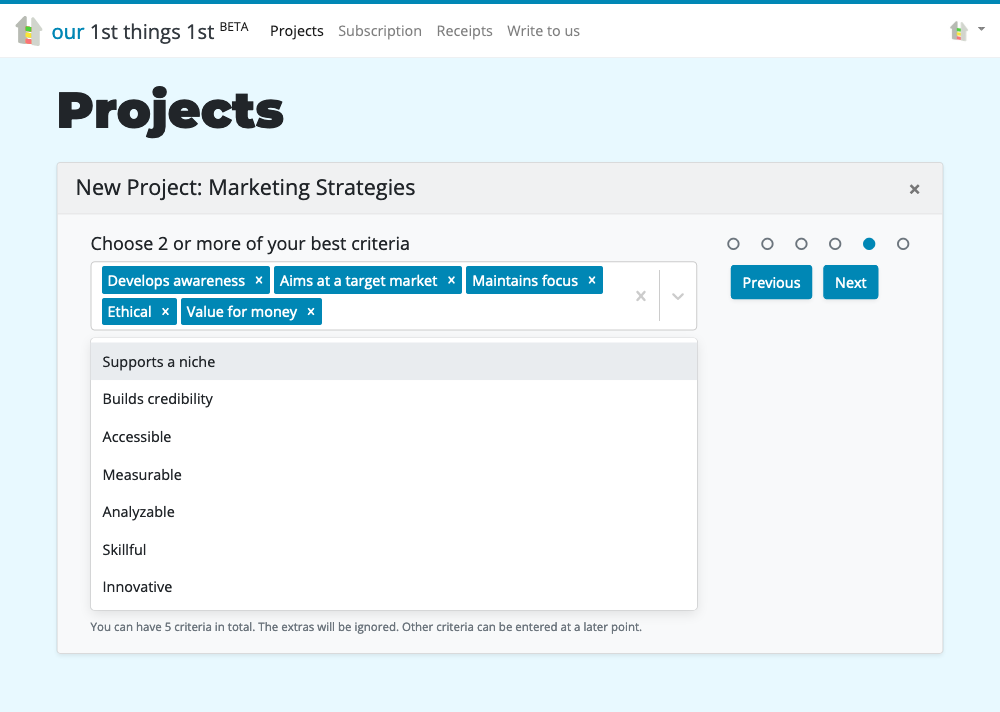
6. Choose some tasks that seem reasonable to you or that you would like to try. You’ll be able to enter some more tasks as free text later too.
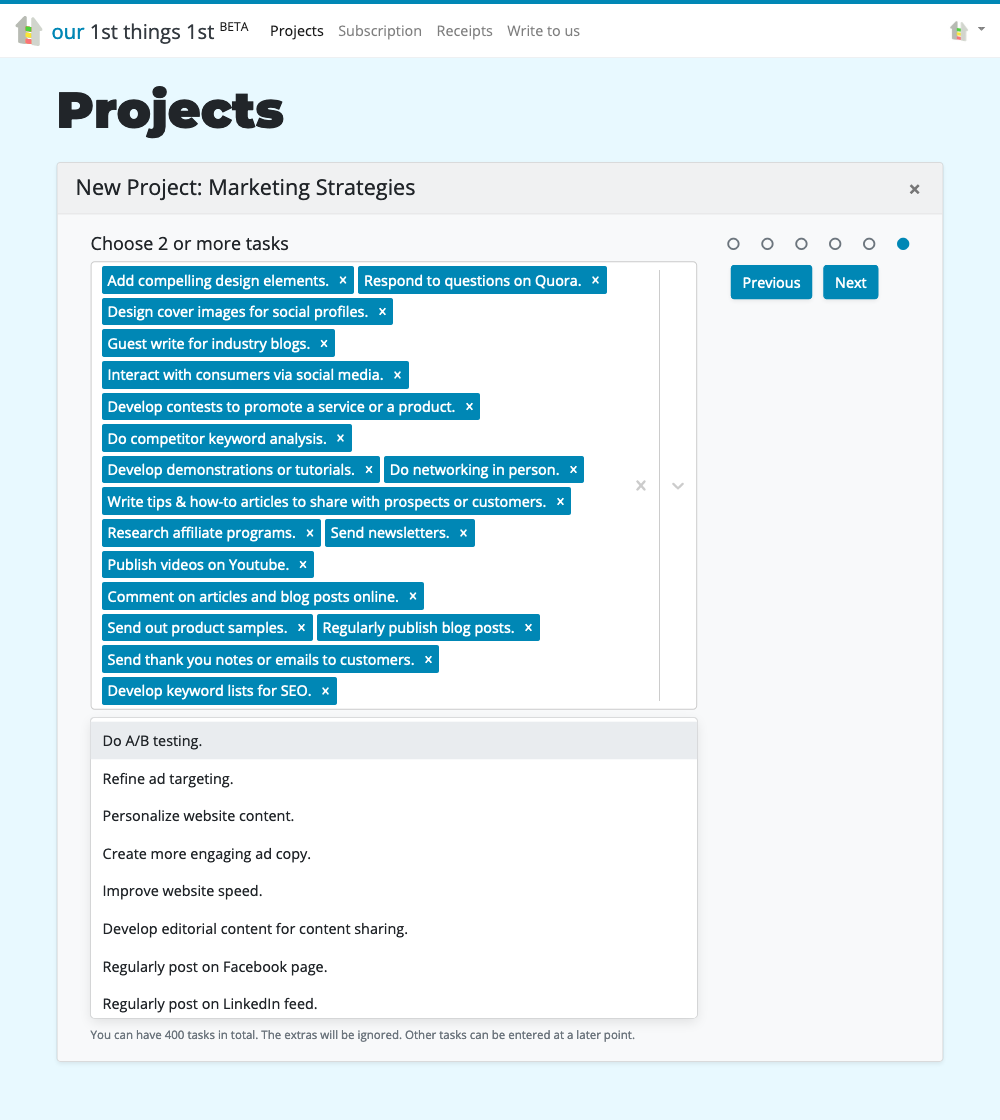
Now when you created the project, let’s explore the main steps of prioritization.
Now you can edit the list of criteria and change their importance or evaluation types. The default importance for all of them is 100%, and the evaluation type is the percentage from 0 to 100% (you will see them in step 3).
For example, this is how I set the criteria for the marketing tactics that I would like to use for 1st things 1st:
All of those criteria matter to me, so I set the 100% importance to all of them.
Your criteria and their importance will depend on your attitude and perspectives.
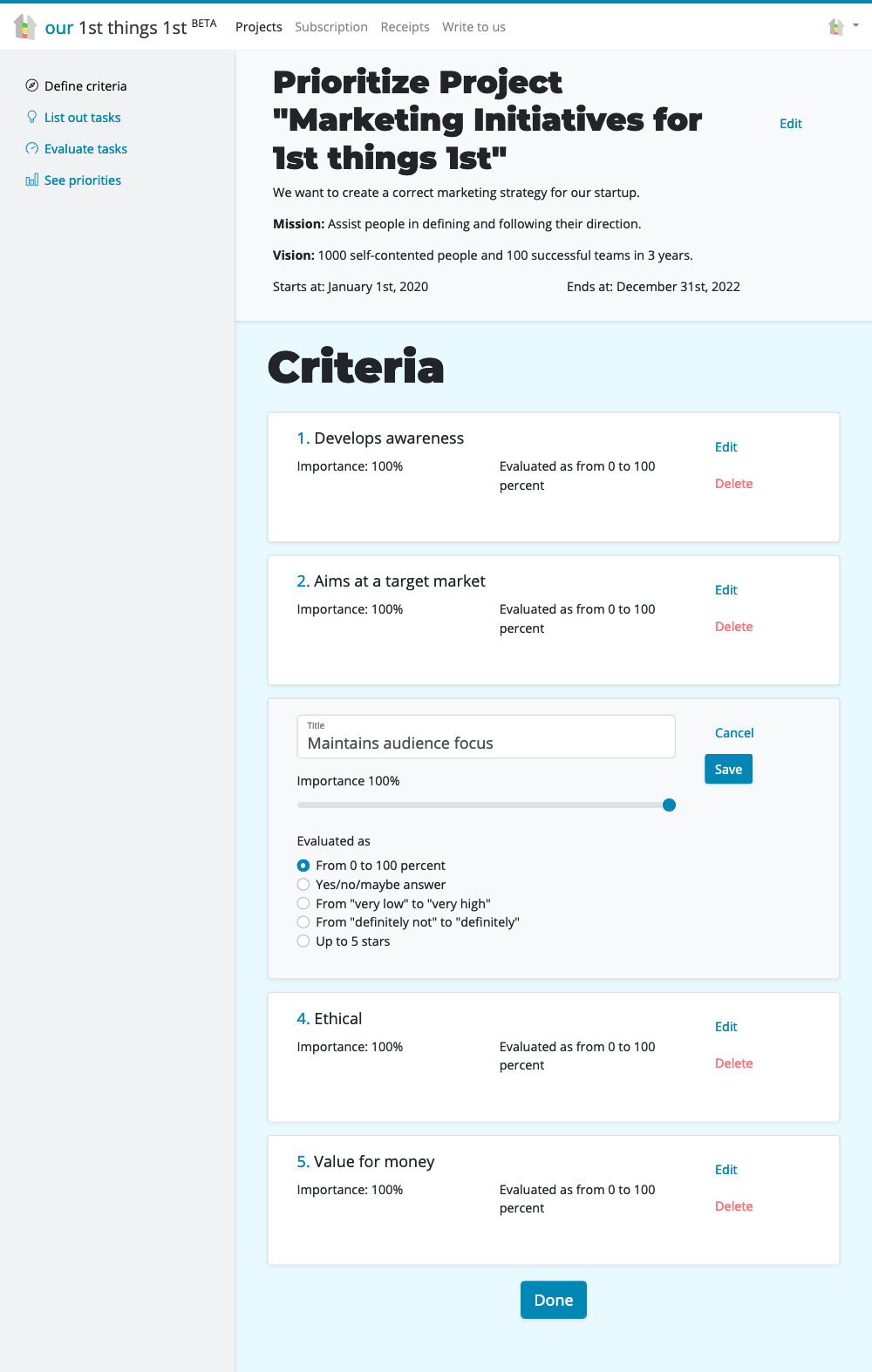
In the next step, you will see the list of our chosen tasks where you can change their titles and descriptions.
For example, at the setup, I chose these things:
Also, I added a couple of new tasks:

Now evaluate all tasks by all criteria. Go through the whole list and mark your choices. Be aware that the number of evaluations will be equal to criteria × tasks.
Let’s say, answering questions on Quora builds awareness at 100%, but doing competitor keyword analysis builds awareness probably at 60%. Doing networking in person is 100% ethical, but commenting on articles and blog posts online with the intention to advertise is maybe 75% ethical. Developing demonstrations and tutorials brings 100% of value for money, but running ad campaigns of Facebook, Twitter, and LinkedIn, brings only 40% value for money. Most of those evaluations are based on my previous experiences and gut feeling. But a marketing expert could have more precise evaluations.
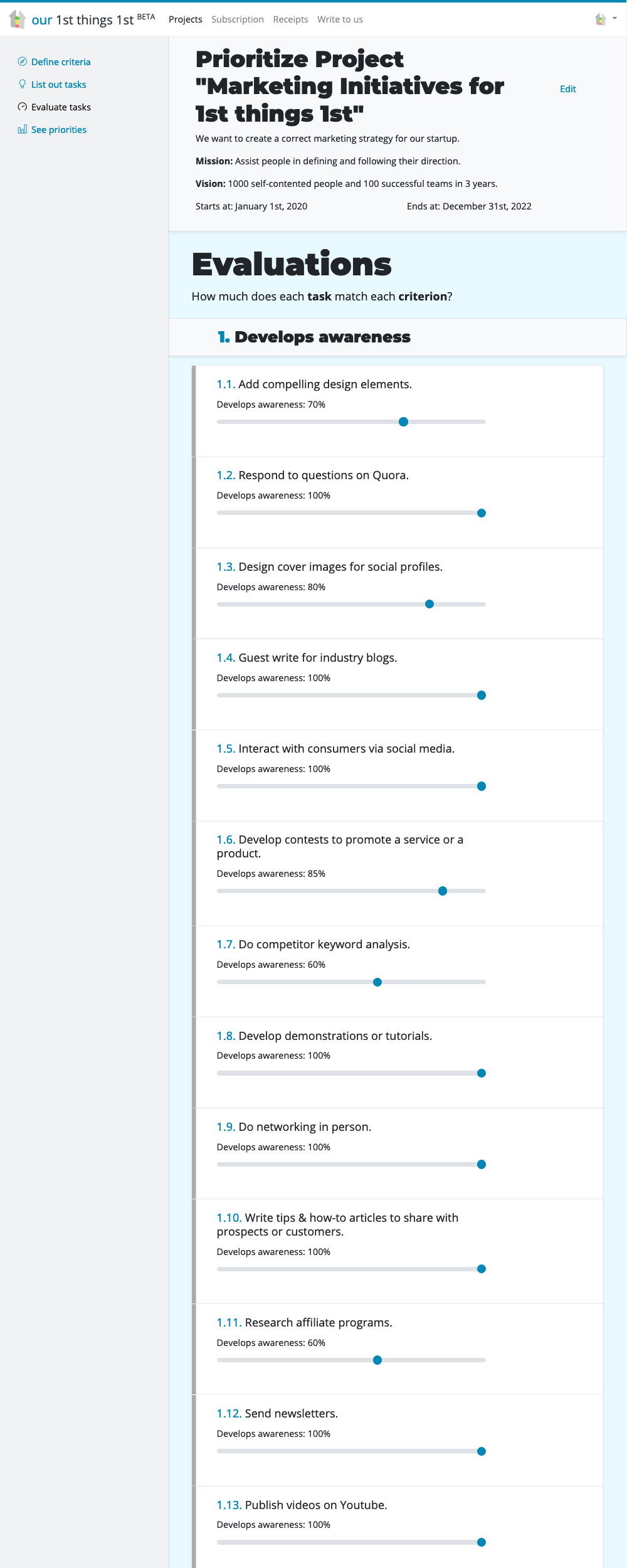
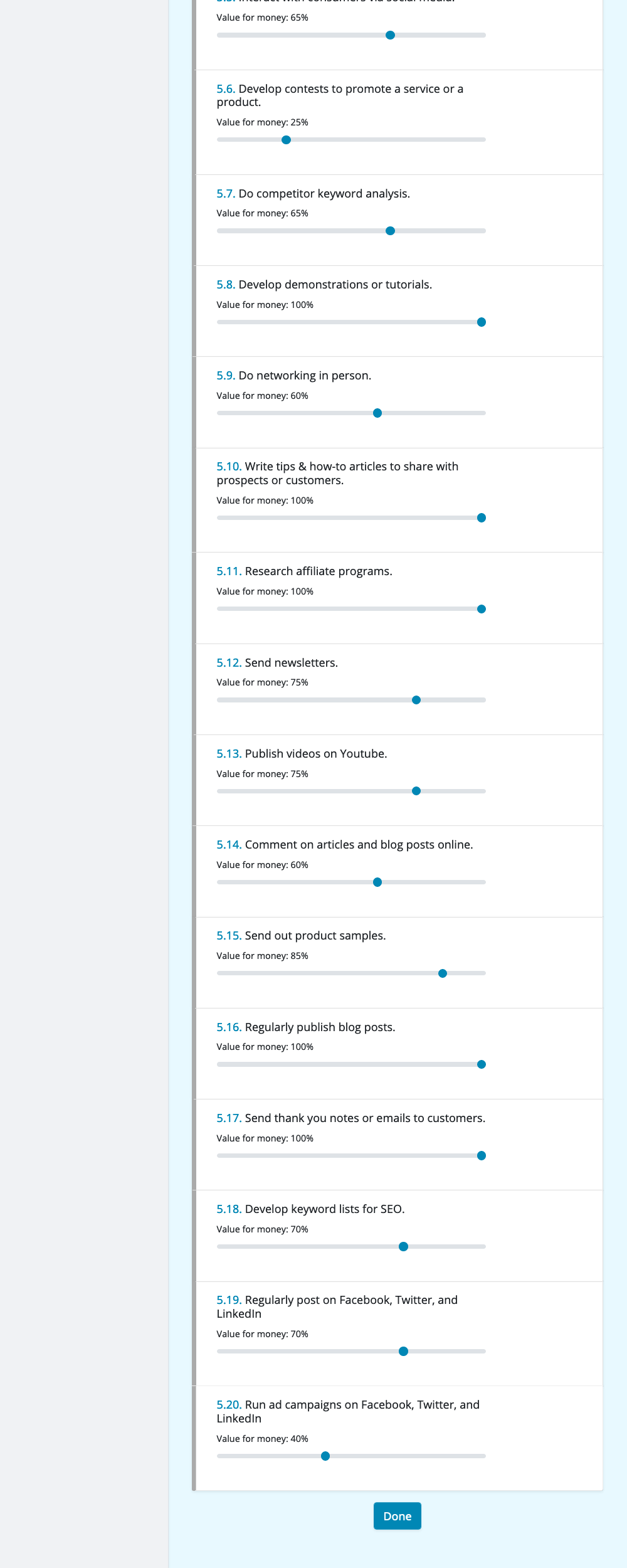
The prioritizer shows calculated and sorted tasks grouped into the ones:
As the result, my most essential tactics are guest-writing for industry blogs, developing demonstrations or tutorials, writing tips and how-to articles to share with prospects and customers, regularly publishing blog posts, interacting with consumers on social media, publishing videos on Youtube, and sending thank-you notes. So, content, content, and more content. That’s what you can expect from this blog in the upcoming future.

After prioritizing your marketing tactics, it’s time to print the PDF version of the results, create user personas, the story you want to tell your customers, and start marketing your service or product.
Check out the organizational strategic prioritizer at our 1st things 1st.
Cover photo by Austin Chan.